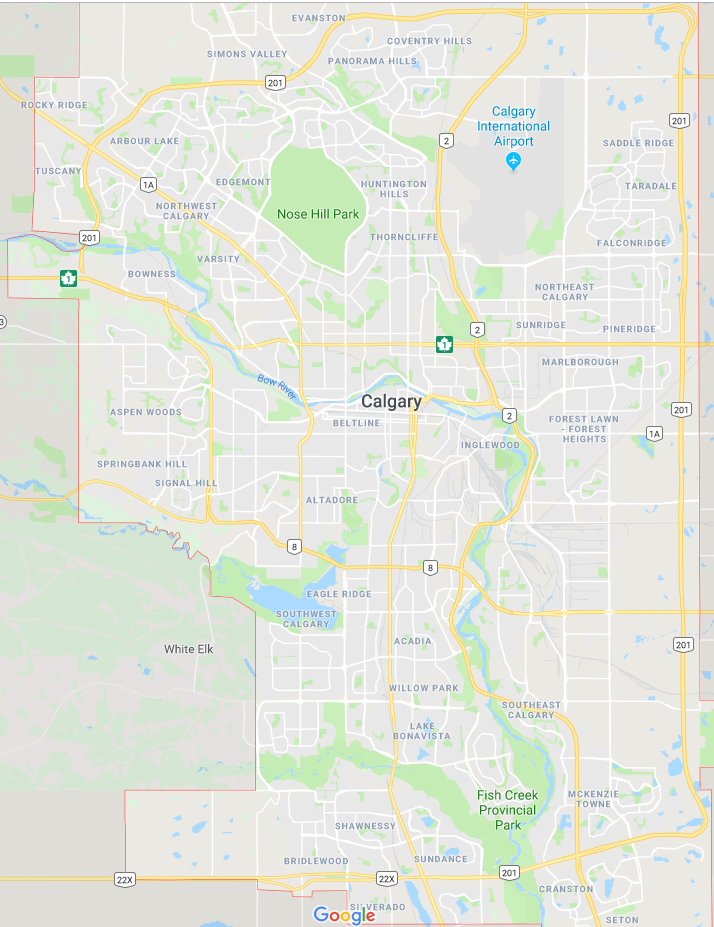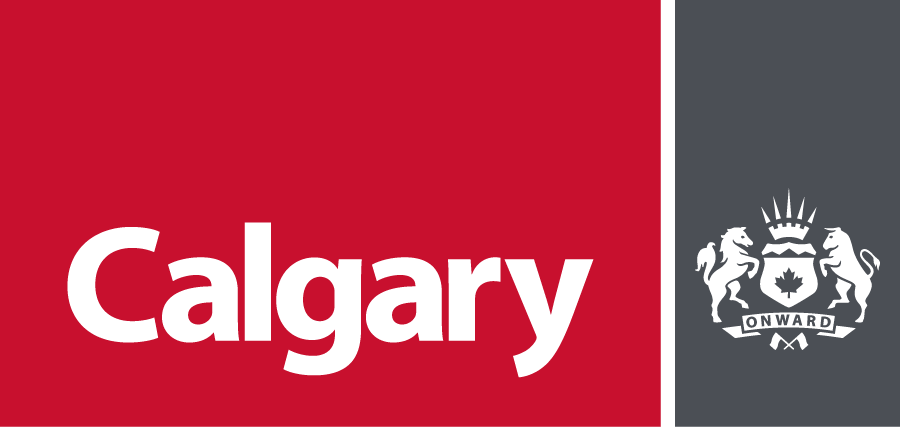Final Recommendation Report
The Final Recommendation Report from phase 4 is complete.
PROJECT UPDATE
The Deerfoot Trail Study is a joint initiative between The City of Calgary and Alberta Transportation.The study covers approximately 35 kilometres of highway, including 18 existing interchange and one future interchange at 128 Avenue N.E.
In Phase 1 of the study we asked Calgarians and Deerfoot Trail users to identify and confirm challenges on Deerfoot Trail.
In Phase 2 we identified possible short-term solutions (see the Short Term Improvements tab above).
In Phase 3 we asked for feedback on the long-term preliminary Deerfoot Trail improvement concepts at seven interchange areas, (download the whole discussion guide for Phase 3 for more).
In Phase 4 we reviewed the long-term recommendations based on Multiple Account Evaluation (M.A.E.), looking at four main factors: financial, environmental, socio-community, and customer service, as well as public feedback.
We are now in Phase 5 which shares the outcomes of the study and presents the final long-term recommendations. The recommended long-term plan enhances safety and mobility for all users and improves and optimizes overall operations throughout the corridor and adjacent network.
WATCH WHAT WE ARE RECOMMENDING
NORTH VIDEOS
CENTRAL VIDEOS
SOUTH VIDEOS
After reviewing the Long Term recommendations, do you have a question you would like to ask a member of the team?
PLANS & IMPROVEMENTS
-
Long Term Plans
To address the existing traffic operations, safety issues and plan for future growth the long term plans feature:
- High Occupancy Vehicle (HOV) Lane in both directions
- Collector Distributor lanes between Barlow Tr & Southland Dr.
- An extension of 50 Avenue SE
- A new Glenmore Trail / Deerfoot Trail interchange
- Improvements at 17 Avenue SE
- Improvements at 16 Avenue NE including a new east/west overpass for 16 Ave
- Modifications at McKnight Boulevard
- Completion of the Beddington Trail interchange
-
Active Modes
Improvements for active transportation connectivity:
- Multi-use pathway 64 Avenue NE
- Multi-use pathway McKnight Boulevard
- Multi-use pathway 32 Avenue NE
- Multi-use pathways 16 Avenue NE
- Enhanced active transportation 8 Avenue NE
- Reconstruction of the crossing at Memorial Drive
- Multi-use pathway at 50 Avenue SE connector
- Enhanced crossing at Deerfoot Tr. at Heritage Dr., Heritage Meadows Way, and Southland Dr.
- Modifications at 24 Street SE / Douglasdale Blvd, 130 Ave SE, and McKenzie Towne Blvd.
DEERFOOT TRAIL PRELIMINARY CONCEPTS BY AREA
You can also click on any of the highlighted spots on the map below to watch videos about A.M. and P.M. traffic flows.

PAST ENGAGEMENTS
WHAT WE HEARD FROM THIS PHASE OF ENGAGEMENT
We heard from the public in a variety of ways, including in-person at open houses, stakeholder meetings, and via our online engagement page. The Deerfoot project team is currently reviewing and evaluating all of the feedback as they work to finalize recommendations for the study. For more information and to review the themes that we heard from the public and stakeholders feedback, we invite you to review the Deerfoot Trail Phase 3 engagement What We Heard Report.
SHORT TERM IMPROVEMENTS
During Phase 2 of the study, the project team developed numerous potential short-term improvement options. In late 2016, the project team held two stakeholder workshops to review short-term improvement options.
For more details on some of short-term options considered, please see the Short-term Options Stakeholder Workshop What We Heard report.
The five recommendations that best met the criteria identified for short-term improvements include:
- New northbound on-ramp from 11 Street N.E.
- "Jughandle" intersection at 32 Avenue / 12 Street N.E.
- Left-turn restrictions at McKnight Blvd / 12 Street N.E. (Council-approved plan)
- Northbound ramp connection between McKnight Blvd and 64 Avenue N.E.
- Southland Drive to Anderson Road / Bow Bottom Trail S.E. southbound basket weave
To receive project updates and be notified of future engagement opportunities, subscribe to the project email distribution list.
PROJECT INFO
The City of Calgary (The City) and Alberta Transportation (AT) are working together to study Deerfoot Trail, between the Stoney Trail interchanges* in the north and south.
The study will consider a range of possible freeway management strategies, including some new to Calgary, and recommend ways to improve safety and mobility in the short- and long-term. The focus will be on making the most of the existing infrastructure, planning for future growth and aligning with the Calgary Transportation Plan.
The study will define and recommend a program of upgrades for Deerfoot Trail by:
- Identifying the existing and future travel needs on the corridor, and any associated impacts on the surrounding communities.
- Engaging the public, community groups and stakeholders to identify users and demands for the corridor, and build a range of potential solutions.
- Recommending safety and mobility improvements for people who drive and take transit.
- Improving air quality and reducing vehicular emissions to reduce greenhouse gas emissions and reduce the time needed to travel to and within the corridor.
*Please note the Stoney Trail interchanges are included only as the limits of the study.The study recommendations are not anticipated to include significant changes to these interchanges.
DEERFOOT TR INFO
Facts about Deerfoot Trail
- Deerfoot Trail is a core route in the National Highway System, managed by Alberta Transportation since 2001.
- In Calgary, Deerfoot Trail is part of the Primary Goods Movement Network, and is classified as a skeletal road in the Calgary Transportation Plan (CTP). Skeletal roads are often high-speed roads aimed at moving cars and trucks for long distances.
- The average daily traffic ranges from 83,000 vehicles per day at the south end to 170,000 vehicles per day north of Memorial Drive.
- Deerfoot Trail is the only road, other than Stoney Trail, providing continuous north-south connection across the city, and the only north-south skeletal road serving central and east Calgary.
Who manages Deerfoot Trail?
- Alberta Transportation assumed responsibility for Deerfoot Trail in 2001 because of its role in the National Highway Network. There is a possibility The City of Calgary will resume responsibility for Deerfoot Trail once the Calgary ring road is complete. This study needs to be completed regardless of who owns the road.
WHAT WE HEARD FROM PAST ENGAGEMENTS
We heard from the public in a variety of ways, including in-person at open houses, a pop-up event and stakeholder meetings, and our online survey and mapping tool. In total, we received 3364 comments on the map and heard from 8140 people through our questionnaire. Our project team has thoroughly reviewed and evaluated all of the feedback from the questionnaire and developed a detailed What We Heard Report. Included in the What We Heard Report are comments received from the public on an online map. The online map comments have been included in an Online Mapping Tool Report which includes all the verbatim comments and a review by intersection. The review by intersection is also available in a condensed report.
What We Heard Summary:
- Most respondents travel Deerfoot Trail daily, in a vehicle by themselves, between 3 and 7 p.m. to commute to and from work.
- Most drivers experience delays along the study area most of the time.
- Those who don’t use Deerfoot Trail said it was because they don’t feel safe on the road.
- The route most travelled by respondents is from Stoney Trail South to Glenmore Trail, while the most congested segment was reported as McKenzie Lake Boulevard to Glenmore Trail.
- Respondents were most satisfied with signage and traveler information while they are least satisfied with duration of travel times and reliability.
- Efforts to clear collisions and stalls is the most important factor for most respondents while the least important factor is visual appeal / appearance.
- Most respondents indicated they would prefer between 17 Avenue S.E. and Anderson Road to be improved first.
- Lane reduction issues, poorly designed on and off ramps, poorly designed interchanges and congestion were the top issues noted by respondents corridor-wide.




